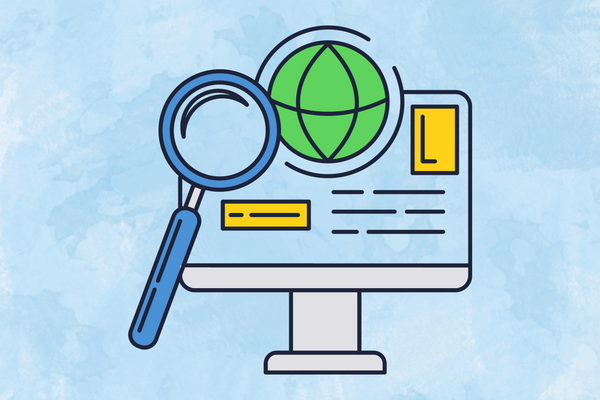
The digital revolution transformed how businesses operate, including collecting and storing data. Manual methods are no longer enough to ensure compliance and gain valuable insights from data collection.
Data discovery tools are instrumental in analysing vast amounts of data and ensuring organisations can use the information to make decisions that result in continued growth and corporate compliance.
With so many tools available, getting started can seem like an uphill struggle. Don’t worry, though, because we’re about to dive deep into the world of data discovery solutions, so you understand their benefits and choose tools that align with your organisational goals.
Key Takeaways
Data discovery tools are vital for organizations that want to remain compliant with industry regulations and make data-driven decisions.
The solutions available include visualization software, data preparation tools, and predictive analytics.
These tools will become more advanced, but developing a robust compliance framework that will regulate your usage of data discovery software is still essential. m
What Are Data Discovery Tools?

Data discovery tools explore and analyze datasets, reducing room for human error. These technological solutions can identify patterns, uncover trends, and highlight any areas for improvement.
Most importantly, they can visualize complex data so stakeholders can understand patterns and make informed decisions.
Data discovery tools are significant in data exploration as they enhance accessibility and enable non-technical individuals to identify and gain insights through simplified visuals.
With diverse data discovery solutions available, businesses can streamline numerous aspects of the process. We’ll explore some of these tools in detail later.
The Advantages of Utilising Data Discovery Tools

Data discovery tools offer numerous advantages for businesses, and understanding how to utilize them can ensure you remain compliant and place you above your competitors.
However, it’s also important to note that human input is still integral in the data discovery process.
Uncovering Valuable Insights
Discovery tools enable businesses to identify patterns and trends you might not have noticed. As they’re capable of collecting and analyzing vast amounts of data, they often surpass human abilities and make it easier to interpret information.
Advanced data discovery software often has AI features, which enable it to offer predictive analytics. Businesses can use these predictions to develop strategies and remain proactive.
Enhancing Data Efficiency and Productivity
Data collection and mapping are integral components of business process management, but they can take up a lot of time. According to Solutions Review, only 4% of companies actively track and manage all of their processes.
By implementing data discovery tools, you can enhance efficiency and enable stakeholders to make timely decisions.
Facilitating Informed Decision-Making
While data-driven decision-making was once seen as forward-thinking, it’s now the norm for many organizations. Research from Statista shows that 38% of organizations studied in 2018 focused on data-driven decision-making, which increased to 50% by 2020.
Data-driven decisions enable organizations to define and measure goals, as well as remain proactive. They can also offer better results than going off intuition alone, as the decisions are all about facts.
Categories of Data Discovery Tools
Data discovery tools offer various functions, and your chosen ones will depend on where you want to streamline the data analysis process. Here are the main categories these tools fall into.
Data Visualisation Tools
Visualization tools can transform raw and unstructured data into visual representations that help you identify patterns and gain insights.
Popular visualization methods include charts, tables, and graphs, and the tools also come with user-friendly features that enable organizations to share insights.
Data Profiling and Analysis Software
Software solutions focusing on data profiling and analysis are powerful ways to evaluate data structure and establish relationships between various elements and datasets.
These tools can be highly beneficial for highlighting inconsistencies and gaining an in-depth understanding of your organization’s data ecosystem.
Data Cataloging and Metadata Management
These tools are instrumental in organizing various data assets and creating a centralized catalog for metadata. This makes it easier to access data, and stakeholders can also discover new insights.
Many solutions also enrich metadata by adding classifications, descriptions, and information that ensure people can understand and utilize the data effectively.
Advanced Analytics and Machine Learning Platforms
Machine learning enables data discovery tools to offer robust features, including predictive and prescriptive analytics.
By leveraging various algorithms, the software can predict future events and even prescribe recommendations to help you achieve the desired outcome.
Many tools can also identify patterns and highlight inconsistencies within datasets, enabling organizations to mitigate potential issues.
Integration and Data Preparation Tools
Integration and data preparation tools focus on assessing data to transform and cleanse it for increased accuracy.
They’re beneficial because they streamline integrating data from different sources, creating a unified view of vital information.
Considerations for Choosing the Right Data Discovery Tools
With so many data discovery tools available, knowing where to start is hard. Instead of jumping straight in and investing in a range of solutions, it’s best to consider a range of factors so you can save money and make an investment into your organization’s future.
Specific Business Needs and Goals
Your unique business needs will differ from other organization’s, so it’s vital to determine which tools align with your objectives.
Do you need to streamline your operations? Or are your main issues with interpreting complex datasets?
Understanding these will enable you to assess essential functionalities like visualization or predictive analytics.
Some tools are designed for specific industries and might offer more features than a standard data discovery solution.
Scalability and Integration Capabilities
The data discovery process will evolve as your business grows or has to adhere to new compliance regulations. Any tool should be able to scale with your business and handle volumes of data as it expands.
Integration features ensure data that flows across various systems can still give organizations a complete view of the information they gather, so it’s also essential to check your chosen tool is compatible with your systems.
User-Friendliness and Training Requirements
Stakeholders and employees of all skill levels should be able to use data discovery tools with minimal training, and that’s why your solution should be easy to navigate.
Consider how much training your team will need and whether you have the capacity to provide ongoing support before making a decision.
Tools with self-service features can simplify complex information for non-technical employees.
Data Security and Compliance Features
Most data discovery tools have stringent security measures to protect sensitive information. However, checking how the tools work and whether they’ll simplify the auditing process is still beneficial.
If you operate within Europe or California, you should also assess whether the tool aligns with the regulations.
Notable Data Discovery Tools in the Market
When it comes to data discovery tools, there are several notable options that offer various benefits, including accuracy, automation, and the ability to streamline multiple functions. Let’s take a look at them.
Tableau
With its user-friendly features and interface, Tableau is a data visualization tool that allows you to create reports and dashboards, turning complex data into identifiable information. By gaining valuable insights, stakeholders can clearly identify trends and gaps.
Power BI
As a Microsoft tool, Power BI is a valuable business analytics tool that enables users to turn data into interactive visualizations. By creating custom dashboards and reports, stakeholders don’t need extensive knowledge to identify data patterns.
Alteryx
Alteryx focuses on preparing data and analytics, as well as blending information from various sources. This tool’s impressive data processing abilities make it stand out, which enables users to gather insights.
QlikView
QlikView is a powerful BI (business intelligence) tool that streamlines data visualization, analysis, and reporting. The great thing about QlikView is it can handle ultra-complex data, highlighting the relationships between various sources.
IBM Watson Analytics
IBM Watson Analytics offers an intelligent data analysis and visualization tool that enables users to track and identify data trends. With its AI features and NLP capabilities, users can seamlessly interact with the platform.
Challenges in Implementing Data Discovery Tools
Data discovery tools will help your business with corporate compliance, but – as with any changes – there can be some initial challenges. If you can navigate them properly, the transition will be smoother.
Data Quality and Consistency
Many businesses struggle to handle data in various formats, which can pose challenges when first implementing data discovery tools. Data that lacks quality and consistency can impact the tools’ reliability, but some tools will clean and transform data.
Choosing the right suite of solutions can make a significant difference in how your organization embraces data-driven decision-making.
Data Governance and Compliance
Your data discovery software should align with any regulations governing your business.
While some companies only need to comply with the GDPR, others that operate internationally or operate within the health and finance sectors require a solution that covers all bases.
That’s why many organizations choose to outsource compliance, as it gives them clear data governance policies and can make various decisions – including which tool to use – a lot easier.
Integration with Existing Systems
One of the biggest challenges of switching to data discovery tools is dealing with compatibility issues when integrating them with existing systems.
When dealing with technical issues during the initial transition, businesses usually need to bring in skilled professionals, which can strain resources.
Choosing a data and business intelligence tool that matches your current systems can save time and money.
Data Privacy Concerns
Data breaches threaten a company’s reputation; even a minor violation can destroy consumer relationships.
Any data discovery tool you choose should have enhanced security features that anonymize personal information to protect the consumer’s identity while ensuring the data is still usable.
Best Practices for Maximising the Value of Data Discovery Tools

There’s no doubt that data discovery solutions can be invaluable for any business, but you’ll also need to maximize the value they offer by implementing best practices.
When all stakeholders work under the same processes and towards set objectives, it’s easy to minimize any potential issues with the tools.
Training and Skill Development
Comprehensive training can highlight the importance of remaining compliant and showcase the benefits of introducing tools into the data discovery process.
By focusing on implementing training programs and offering ongoing support to teams, everyone can contribute to utilizing the power of data.
Collaboration and Interdepartmental Communication
A collaborative environment involves different departments actively sharing information and contributing to decision-making.
It’s essential to create a culture of open communication where people feel they can speak up about any issues and technical members support non-technical employees.
Shared dashboards and reports are also beneficial, enabling different departments to utilize the findings and actively contribute to remaining compliant.
Regular Updates and Tool Optimisation
Discovery tools are great, but they’re not a fix-all solution and do require human maintenance. By regularly updating the tools, you can access new features and ensure the software is up to date.
It’s also vital to actively monitor whether your current software solutions still provide benefits or whether it’s time to switch to a new one.
By staying ahead of the curve and being willing to make changes, you can maintain a data-driven culture.
Future Trends in Data Discovery Tools

Thanks to the evolution of AI and machine learning, data discovery tools will continue to diversify their capabilities and offer businesses more features.
Several potential trends will make a significant difference in data collection and analysis. Let’s take a look at them.
Evolving Features and Capabilities
Predictive and prescriptive analytics are changing the way organizations make decisions. With their unique ability to gather vast data, these features predict events and advise on the best course of action.
Along with more intuitive visualization and real-time data analysis, businesses will be able to make productive decisions quickly.
AI and Automation Integration
As AI becomes more advanced, it will streamline the data preparation process and offer significant time savings. Analytics will also identify various trends without the need for human intervention.
We can also expect strides in natural language processing, enabling non-technical people to interact with the tools easily.
Enhanced Data Governance and Compliance Features
Future tools might also include better compliance management integrations that aid businesses in adhering to all relevant regulations.
Another exciting possibility is advanced audits that enhance an accountability framework and foster a positive culture of transparency.
Final Thoughts
With their current features and future advances, data discovery tools enable businesses to take control of the information they gather and make intelligent decisions that result in better reputations and organizational growth.
Remember, the ideal data discovery tool for your business depends on the type of data you handle and the various systems in place.
The first step in choosing a data discovery solution is understanding your organization’s compliance status and identifying potential issues.
If you’d like support with this process, Captain Compliance offers a range of data compliance solutions that help you implement data mapping strategies and discovery tools.
Please don’t hesitate to get in touch today; we’d love to support you with your compliance needs.
FAQs
What is a data discovery tool?
Data discovery tools allow users to collect and analyze various datasets, identifying patterns and trends. They streamline data analysis, enabling better decision-making.
What are the features of data discovery tools?
Data discovery tools have different features, depending on the solution you choose. Popular capabilities include data visualization, advanced analytics, and data preparation.
What are the three methods of data discovery?
There are three main methods of data discovery:
Visual Discovery: This form lets users identify trends and patterns through visual trends.
Guided Advanced Discovery: These tools use mathematical and statistical models to provide advanced insights and analytics.
Self-Service Discovery: Allows individuals without technical abilities to access and review data.
Which service is used for data discovery?
Services including Power BI, QlikView, Tableau, and Alteryx are ideal for data discovery. They let you explore different trends and analyze data to gain in-depth insights.